Understanding the Adventure World of a Story’s Second Act
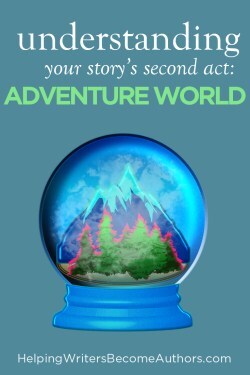 Every story is an adventure. No matter its genre, focus, or tone, a story is always about an undertaking of some sort, whether cosmically large or familiarly small. This is why writers can use the metaphor of the Adventure World for a story’s Second Act to better understand this crucial part of story structure in almost any story.
Every story is an adventure. No matter its genre, focus, or tone, a story is always about an undertaking of some sort, whether cosmically large or familiarly small. This is why writers can use the metaphor of the Adventure World for a story’s Second Act to better understand this crucial part of story structure in almost any story.
Last week, we kicked off this short series with an examination of the Normal World of a story’s First Act. In that post, I noted that the terms Normal World and Adventure World, which I frequently use in reference to a story’s First and Second Acts, originate with the Hero’s Journey. There, they are meant to evoke the “journey” of a character who moves from a safe space or mindset into a quest through a challenging or even dangerous landscape or mindscape, until finally they “return from the descent” with a healing prize of some sort. Basically: a character arc.
One could argue that the terms Normal World and especially Adventure World should remain specific to the Hero’s Journey. And this is why I offered alternative terms for other archetypal arcs, such as the Regal World of the King’s First Act and the Preternatural World of his Second Act. However, I still find that Normal World and Adventure World seem to be applicable umbrella terms for all stories—as long as we understand them to be metaphorical rather than literal.
Or maybe not… because, as I said, really every story is an adventure story one way or another.
These days, when we hear the word “adventure,” we tend to think it synonymous with “fun.” If I say, “Oh, I want to have an adventure!”, what I probably mean is that I want to go have a jolly vacation in Hawaii. Or possibly I’m thinking I’d like to replicate the same fun buzzy feeling I get when I watch an adventure movie. Except… would I really want to go through the same “adventure” that most adventure heroes endure?
One of the main definitions of “adventure” as a noun is:
…an undertaking involving uncertainty and risk.
As a verb, it gets even heavier:
…to put something at risk or in danger … to dare to go somewhere new or engage in something dangerous.
All of sudden that beach in Hawaii is looking a lot more like Mt. Doom!
The point here is that “Adventure World” should not be understood to require that the characters in your Second Act go on “adventures” in the stereotypical sense. Neither is it necessary that their adventures look like a quest into Mordor. What is important is the symbolism of the adventure as a “brave new world”—an uncharted place, even if it is only in the character’s own psyche, and even if it is comparatively safe.
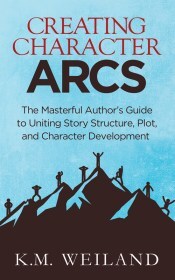
Creating Character Arcs (Amazon affiliate link)
Stories are adventures because stories are about change. Any change, large or small, is ultimately an “undertaking involving uncertainty and risk.” How high you stack the stakes will depend on your own story. Obviously, the Adventure World in Lord of the Rings looks very different from the Adventure World in Anne of Green Gables—but both are adventures nonetheless.
With that said, here’s a quick reminder of where we’re at in this series:
1. The Normal World of the First Act
2. The Adventure World of the Second Act
3. The Underworld of the Third Act
4. The New Normal World of the Resolution
The Adventure World of the Second ActThe Second Act represents the middle two quarters of a story, from 25% to 75%. Having been launched by the First Plot Point at the 25%, it is punctuated with the First Pinch Point (37% mark), divided by the Midpoint or Second Plot Point (50% mark), punctuated again by the Second Pinch Point (62% mark), and ended with the threshold of the Third Plot Point (75% mark). The Second Act constitutes the main bulk of a story, focusing on the protagonist’s pursuit of a plot goal and the obstacles she must overcome along the way, as well as her own inner transformation, which will eventually impact her ability to gain (or not) the plot goal by the time the Third Act rolls around.
What Does the Adventure World Symbolize?Basically, the Second Act is your story. This is not to minimize the crucial importance of the First and Third Acts, but they are, essentially, bookends to the main action. The development of plot, character, and theme all take place primarily within the Second Act.
If the First Act represented your story’s Normal World, then it’s clear the Adventure World of the Second Act is anything but normal. Your character has embarked into a new phase of his life. He is on an adventure—a quest to locate and gain his main plot goal. But on a deeper level, this is an adventure of the soul. The plot goal is just a Maguffin. It is bait to lure the protagonist onto the road of transformation.
How deep you go with this transformation will, of course, depend on your story. In some stories, such as serial fiction or TV shows in which the character can’t risk too much from episode to episode, the adventure may be simply a small problem to solve. Even in serial fiction with heavier stakes, such as the Marvel Cinematic Universe (which, indeed, usually offers world-ending stakes in any one installment), it is understood that the characters will not necessarily undergo a dramatic transformation.

However, other stories follow the common bit of wisdom that whatever happens in a story should be “the most important event in this character’s life.” At the very least, what’s happening is significant in the character’s life. It’s an epoch. And epochs are inevitably adventures, whether they involve John McClane in Die Hard battling terrorists to save his wife or Emma Woodhouse in Emma figuring out she wants to marry Mr. Knightley.

The concept of the Adventure World very often does encompass a specific physical setting. Indeed, in its most classic and obvious manifestations, the Adventure World is just that—a new, exciting, and possibly dangerous setting into which the protagonist finds herself thrust. This is what happens in stories in which the protagonist leaves the setting of the Normal World and enters an entirely new setting in the Second Act.
For example, Harry Potter escapes Privet Drive and goes to Hogwarts in The Philosopher’s Stone.

Mulan rides away from her village and joins the army in Mulan.
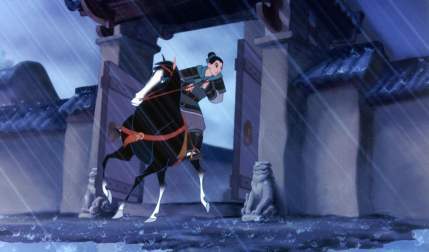
Elinor and Marianne Dashwood have no choice but to leave their family home for a lonely cottage in Devon in Sense and Sensibility.
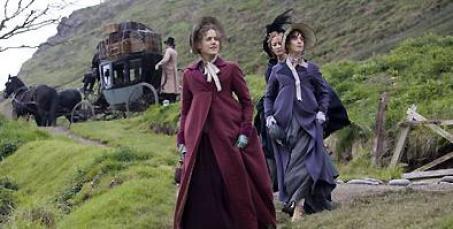
Luke Skywalker flees Tatooine and gets captured by the Death Star in Star Wars: A New Hope.

Dorothy Gale leaves Kansas and is tornadoed over the rainbow into Oz in The Wizard of Oz.
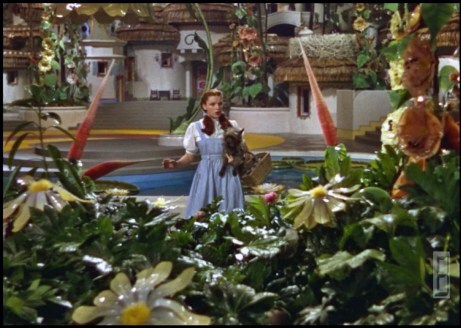
Hercule Poirot ends his sabbatical and boards the Orient Express in Murder on the Orient Express.

It’s also possible that although the character does not physically leave the initial setting introduced in the First Act, the world symbolically changes from something normal and familiar into something surprising and challenging. This could have to do with the setting itself changing for some reason, as in I Am Legend when New York City is transformed into a ghost town by the zombie virus.

It could also be the result of the character’s previously predictable life being upended by circumstances, such as in many romances. For example, in Jane Austen’s Emma, Emma Woodhouse’s quiet and (mostly) contented life is forever changed when rakeish Frank Churchill arrives on the scene.

This is also true of many murder mysteries, in which the transition doesn’t see the detective leaving her own world, but does see her entering into the world of the victim and the killer, as in many serial detective stories, such as Grantchester, Blue Bloods, and Castle.
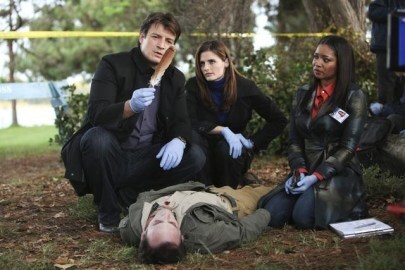
It’s also important to keep in mind that the concept of the Adventure World does not have to indicate any particular change in setting. The shift may be something subtle that happens only within the character’s own perspective: what was normal suddenly is not. This is more common in existential stories, such as Ian McEwan’s Atonement.
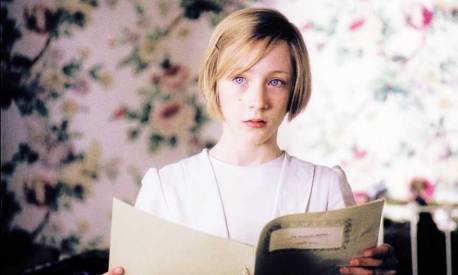

Writing Your Story’s Theme (Amazon affiliate link)
The thematic import of the First Act’s Normal World was to set up the Lie the Character Believes. This is so the Lie can then be explored in the Second Act. The Adventure World exists to challenge the Lie. Indeed, that’s the adventure! The Lie represents a safe, familiar space for the character. It may not necessarily be a bad space per se, but by the time your story begins, it will have become a limited space. One way or another, the character must break out of the confines of the Normal World and into the spaciousness of the Adventure World.
Out there in the Adventure World, the character will be challenged to grow past this Lie and into a new Truth. Whether or not he succeeds will depend on the type of arc he is undergoing (Positive, Flat, or Negative). Regardless, the Adventure World of the Second Act is his testing ground. The challenges he meets here are specifically designed to force him to confront his limitations. The only way he can survive the Adventure World and move on to a new and more expanded normal is to increasingly transition from Lie to Truth.
The symbolic importance of the “adventure” as “an undertaking involving uncertainty and risk” is the reality that change is both difficult and necessary. Whether that change for your character is small or large, internal or external, the Adventure World is where it happens.
***
Because the Second Act takes up such a proportionately large part of your story (fully 50%—and perhaps more, depending on how closely you’re hitting the timing of your structural beats), its execution is unquestionably vital to your readers’ experience. Using the lens and metaphor of the Adventure World can help you bring this section into focus in a way that aligns your plot, character, and theme for full impact—and sets you up for a rock-solid Third Act.
Stay Tuned: Next week, we will venture into the Underworld of the Third Act.
Related Posts:
Understanding the Normal World of a Story’s First ActWordplayers, tell me your opinions! What happens in your story’s Adventure World? Tell me in the comments!Click the “Play” button to Listen to Audio Version (or subscribe to the Helping Writers Become Authors podcast in Apple Podcast or Amazon Music).
___
Love Helping Writers Become Authors? You can now become a patron. (Huge thanks to those of you who are already part of my Patreon family!)The post Understanding the Adventure World of a Story’s Second Act appeared first on Helping Writers Become Authors.





